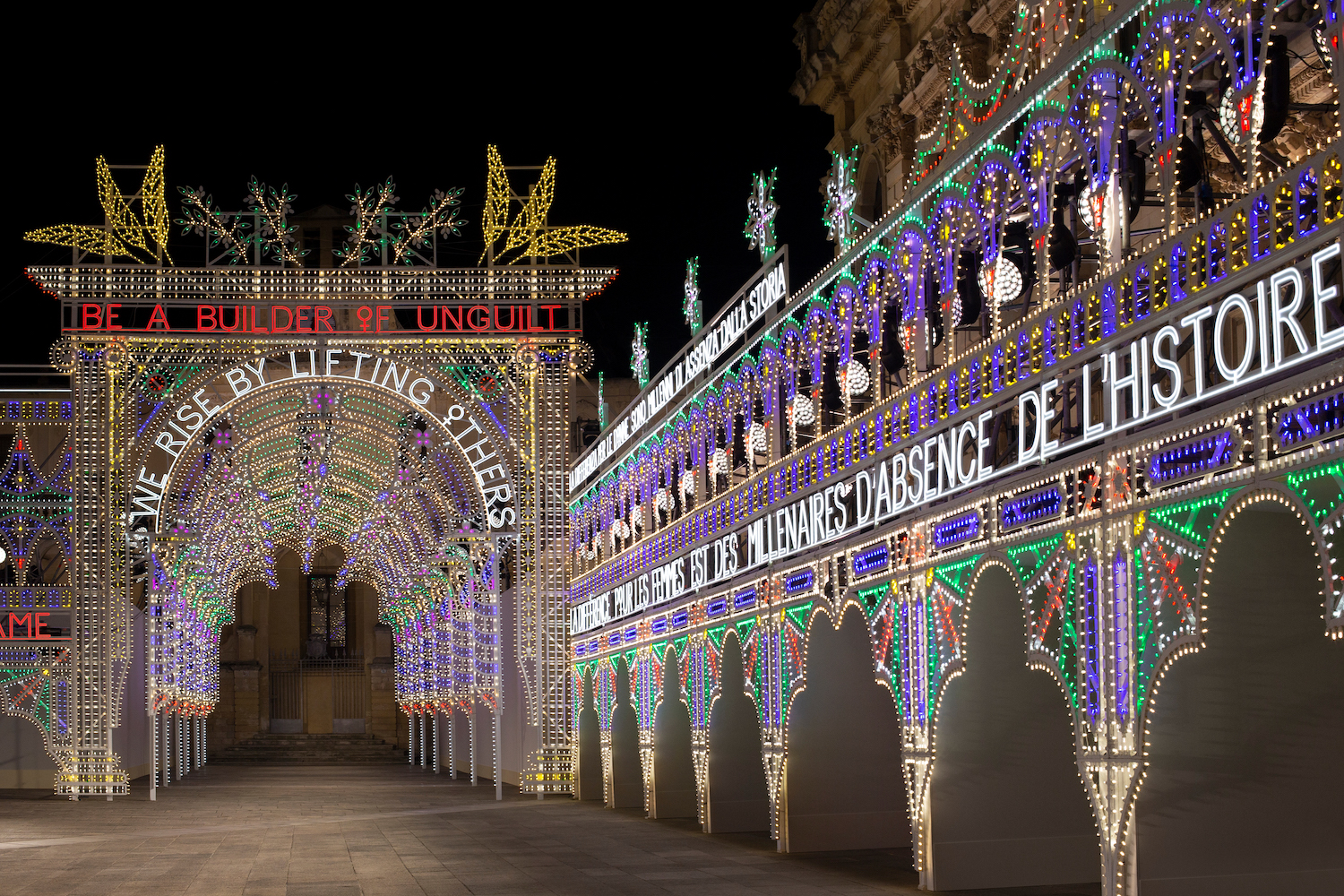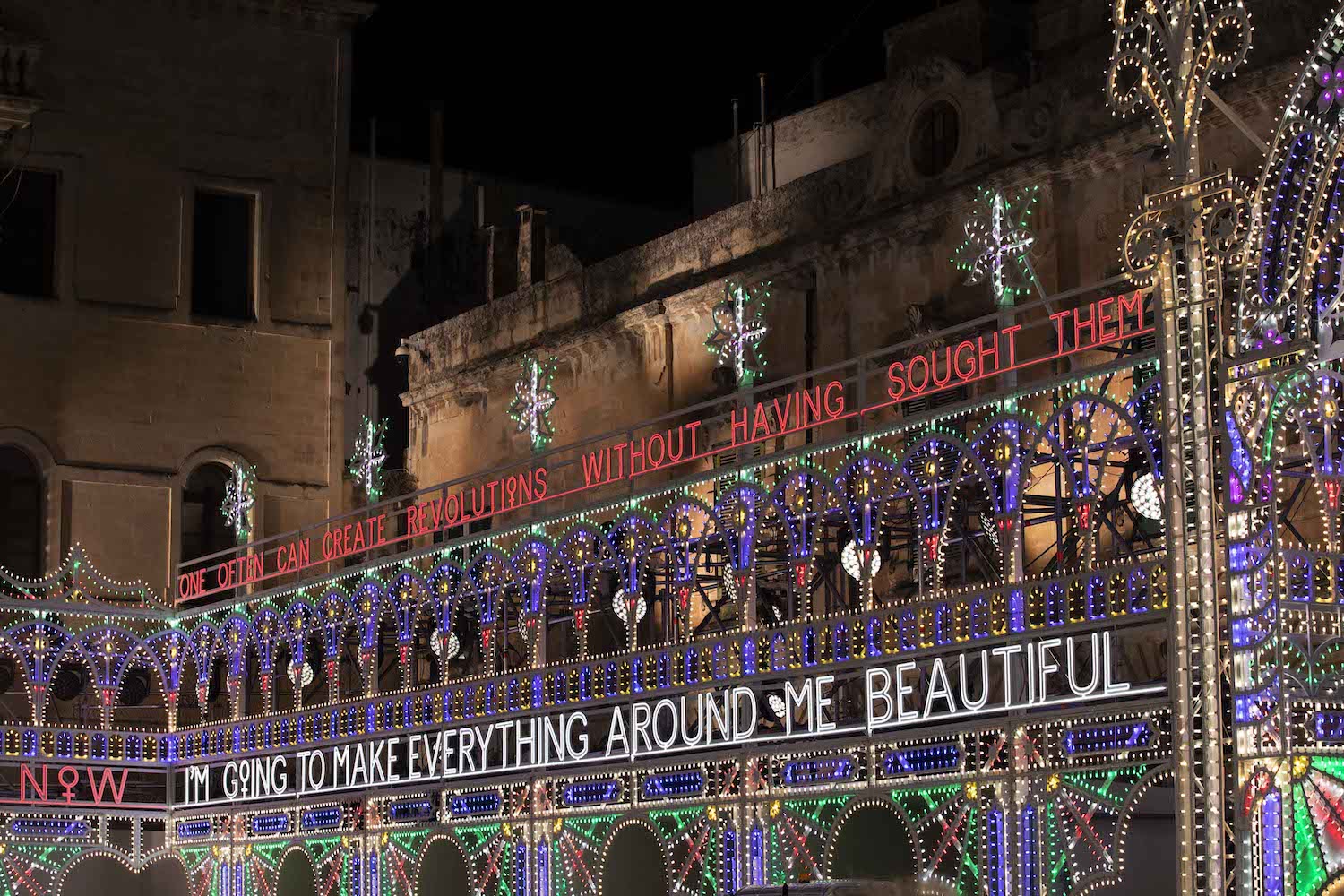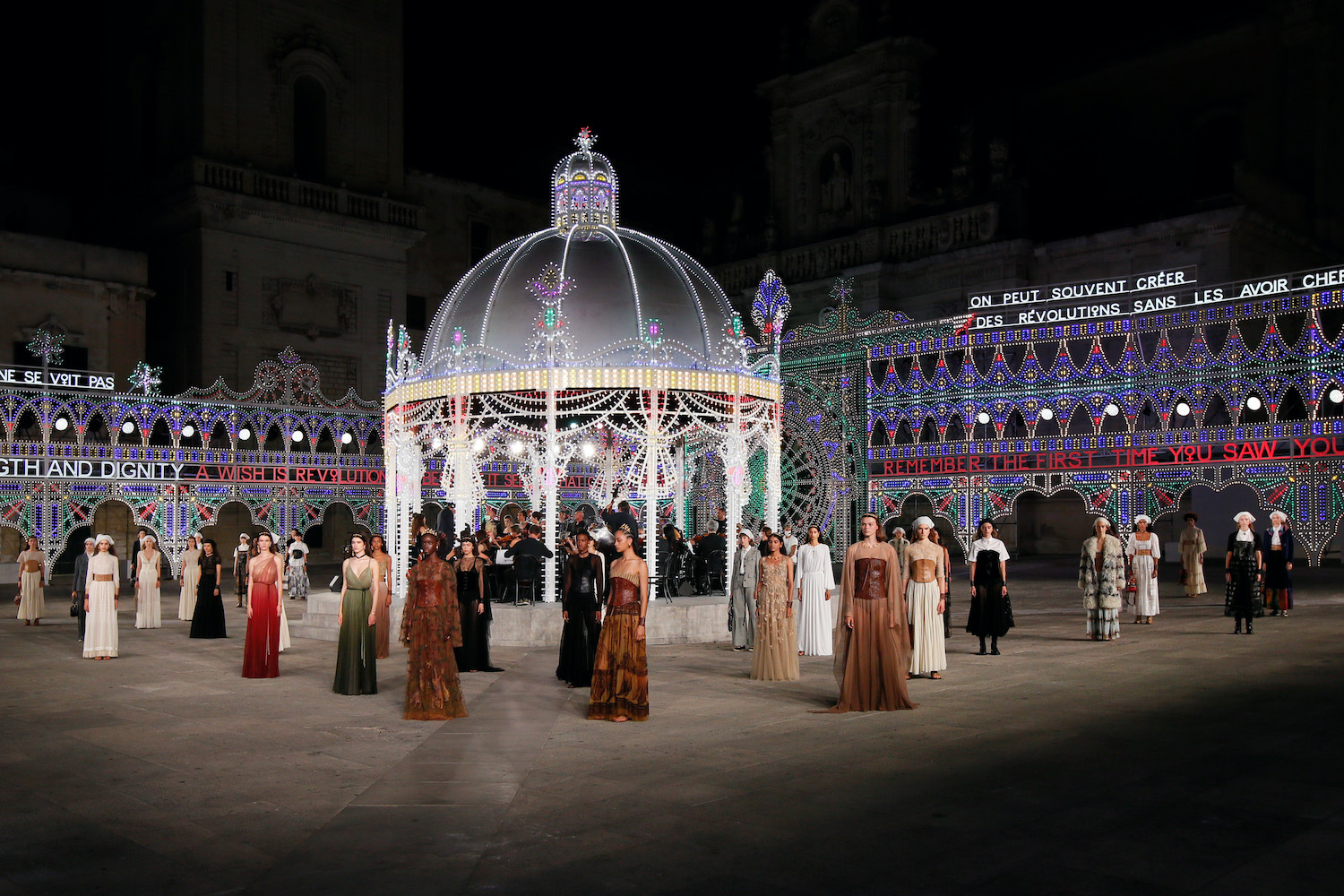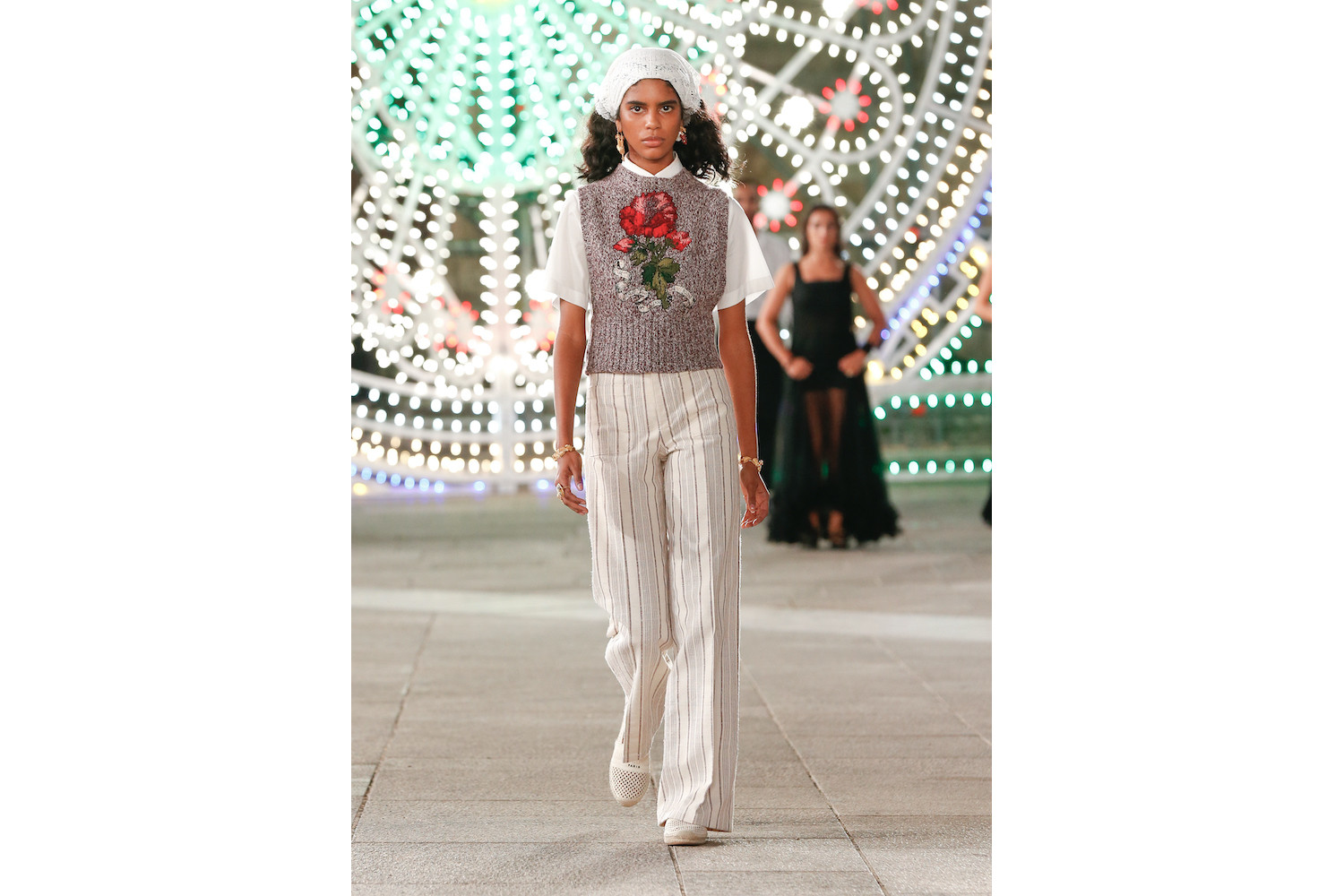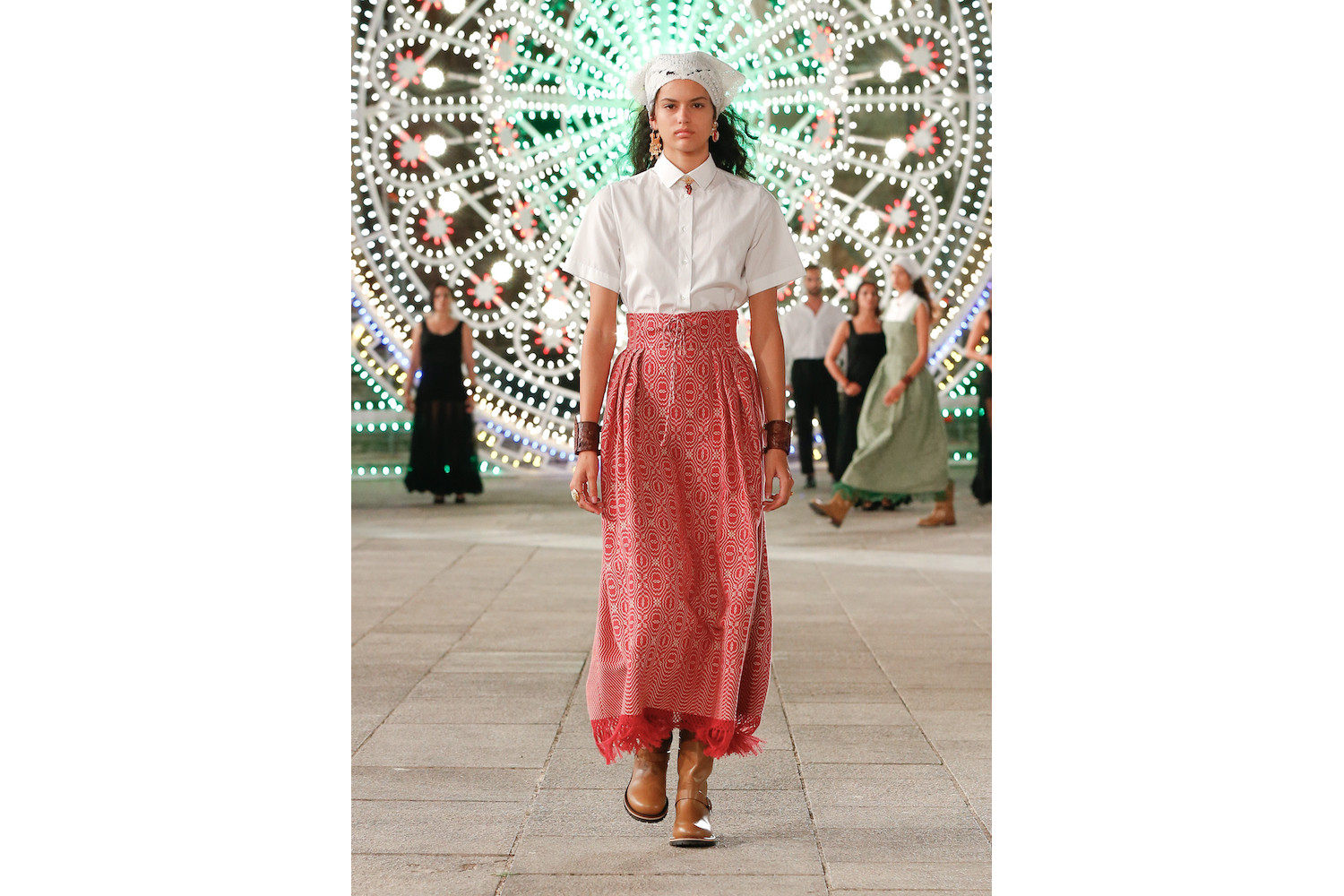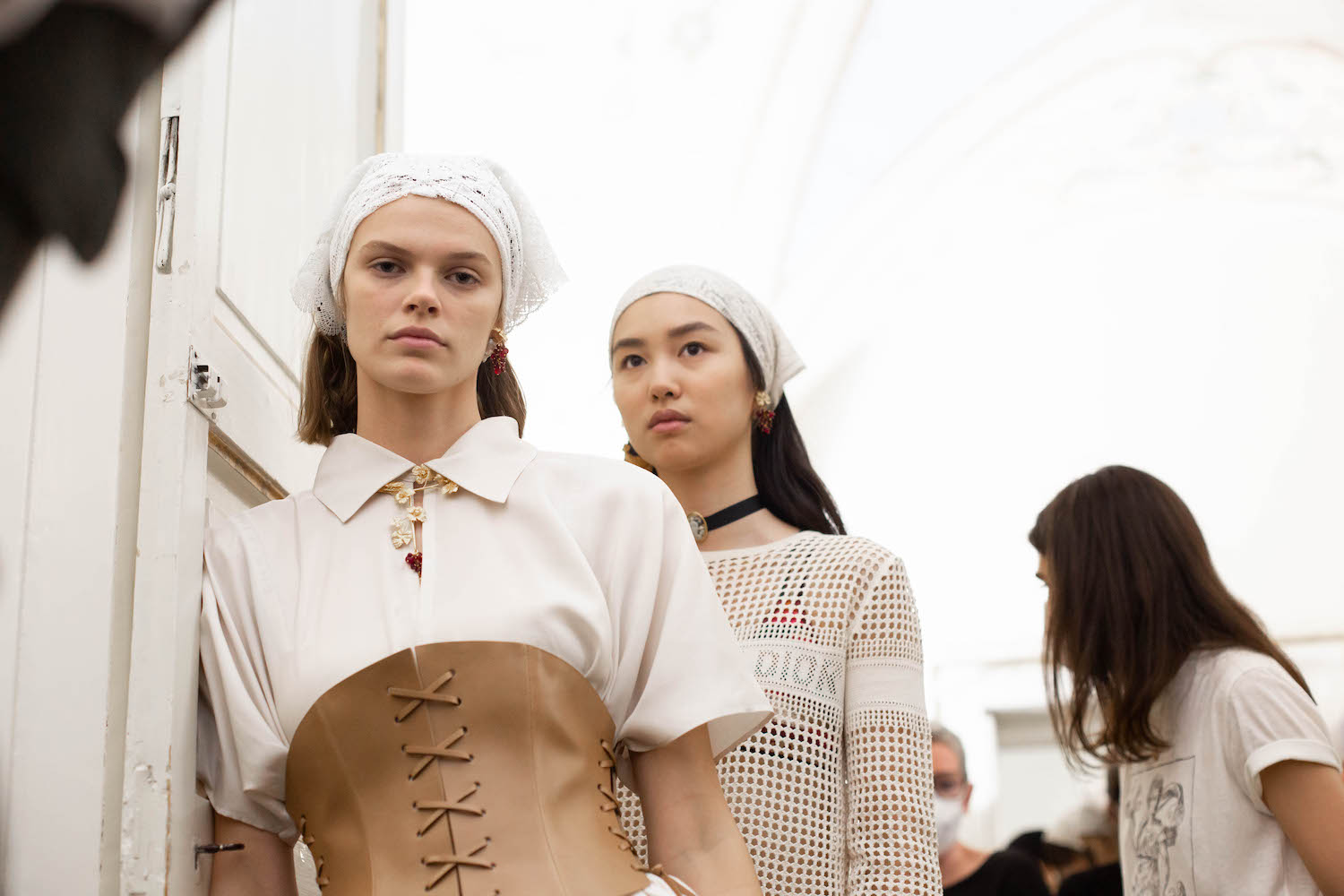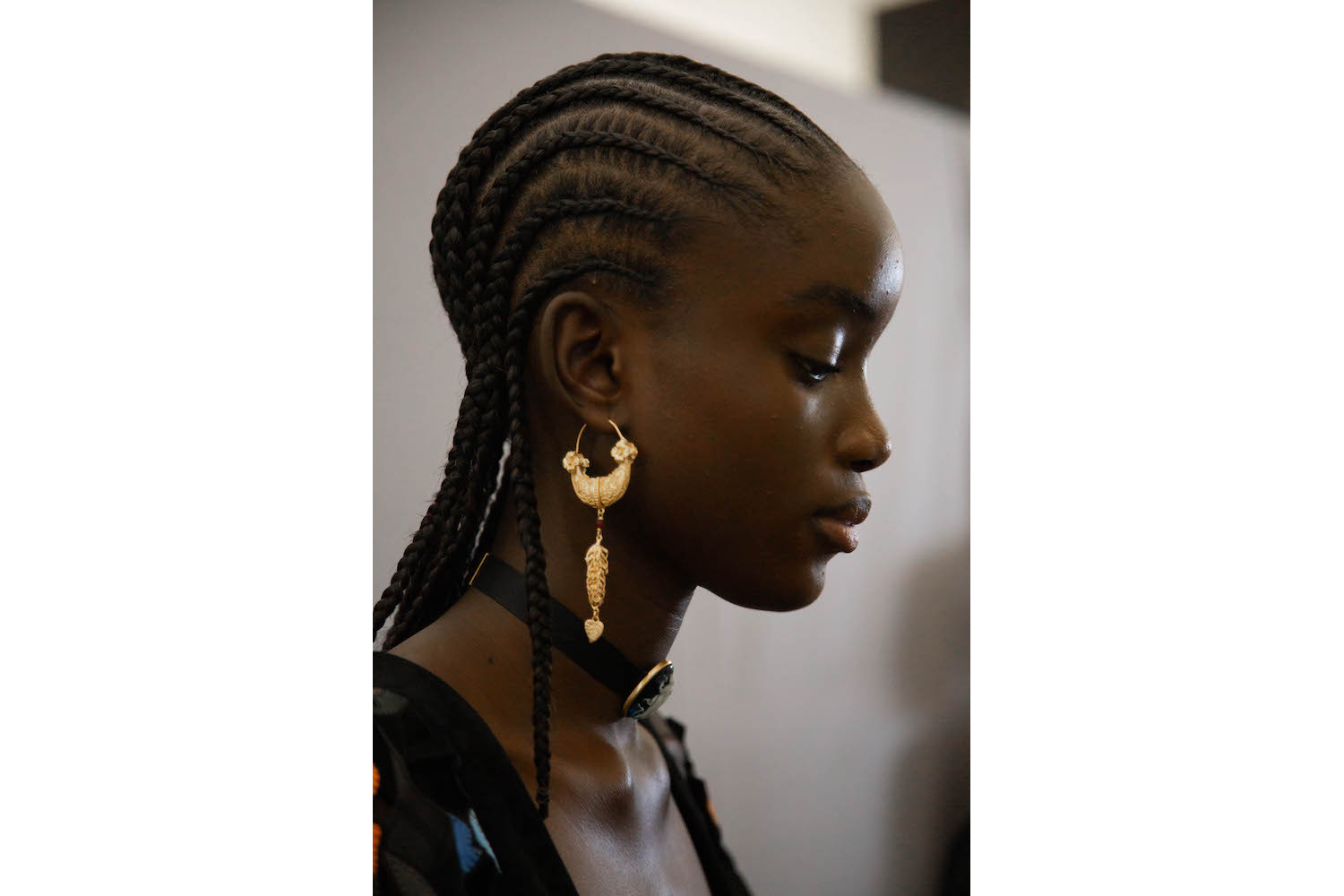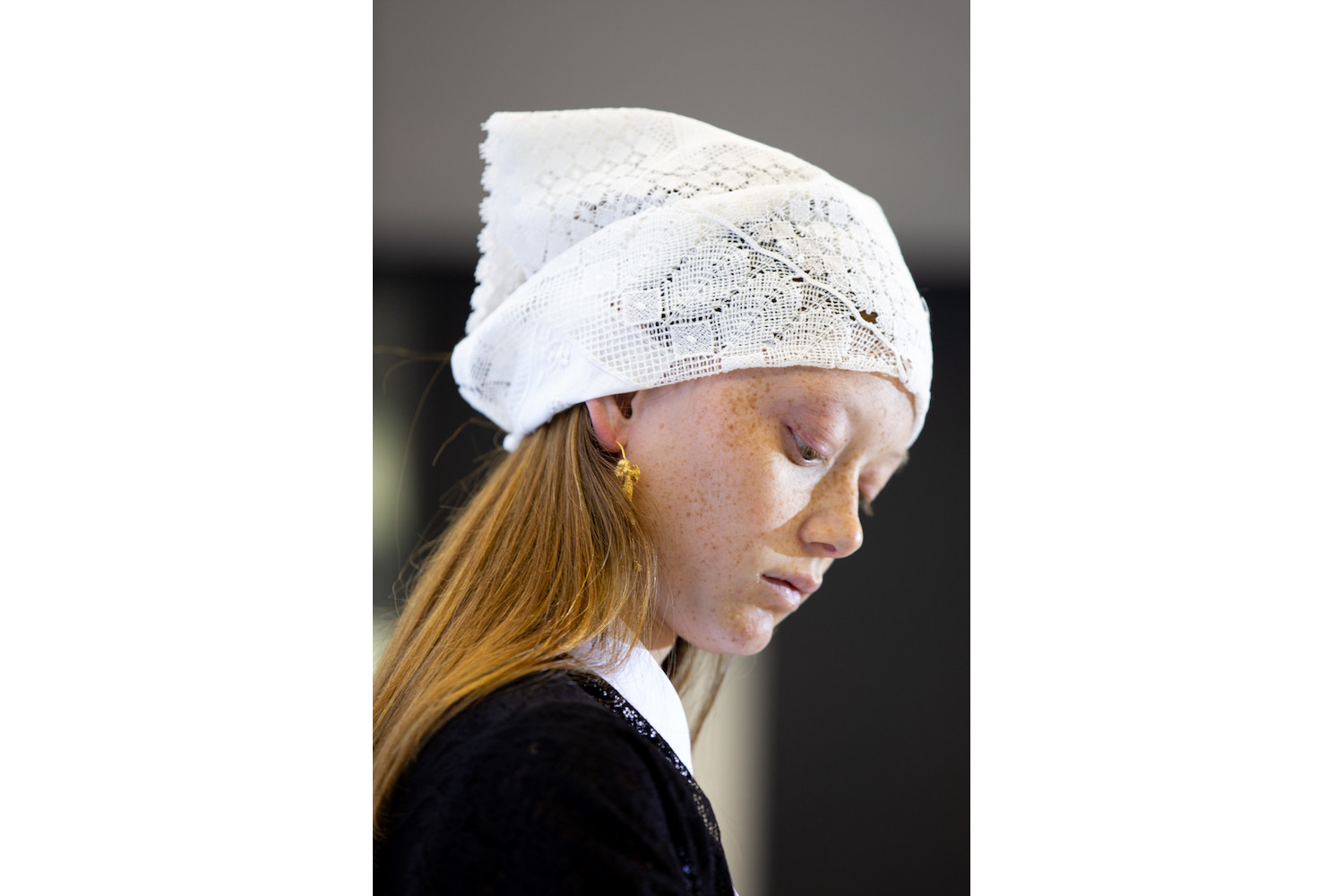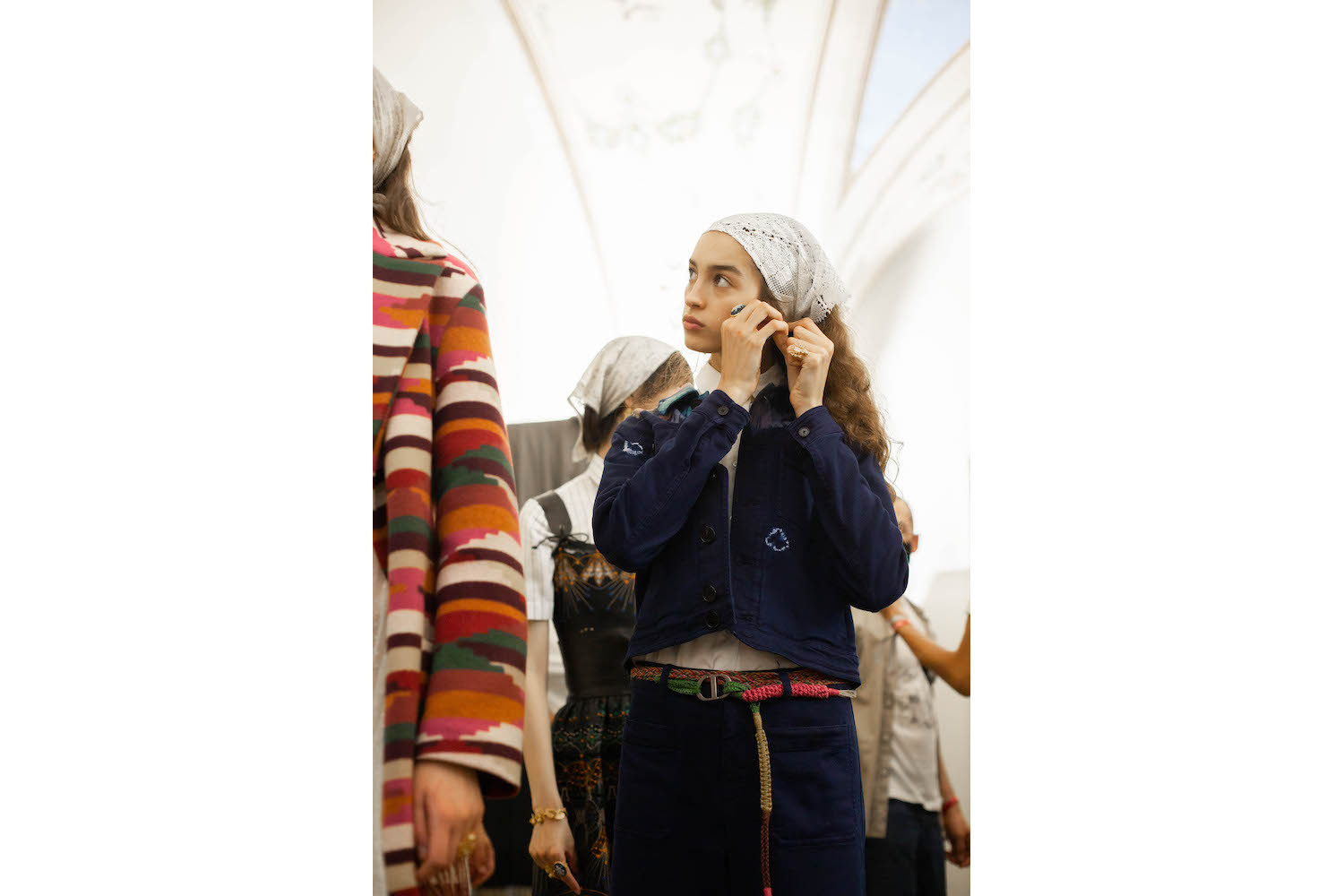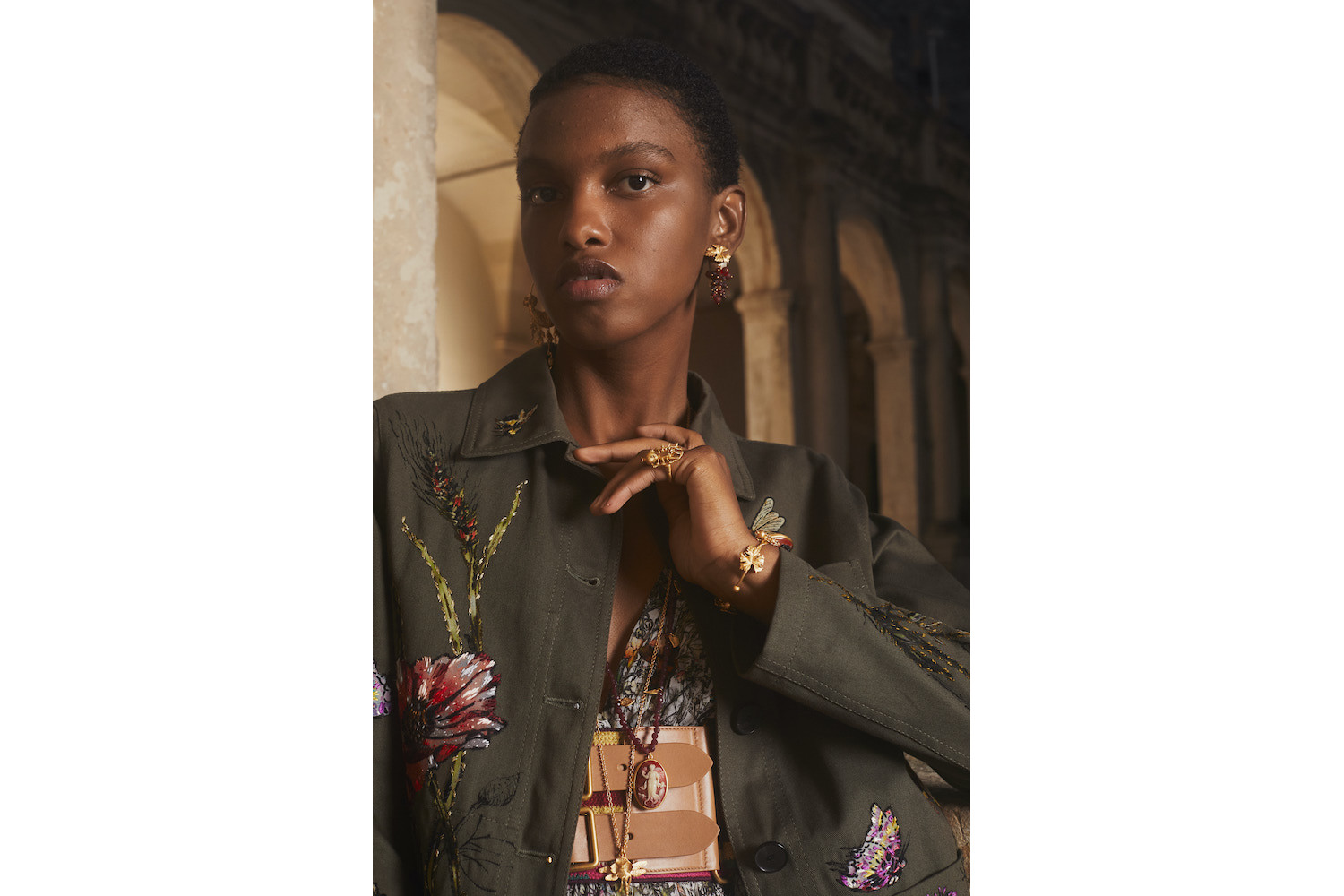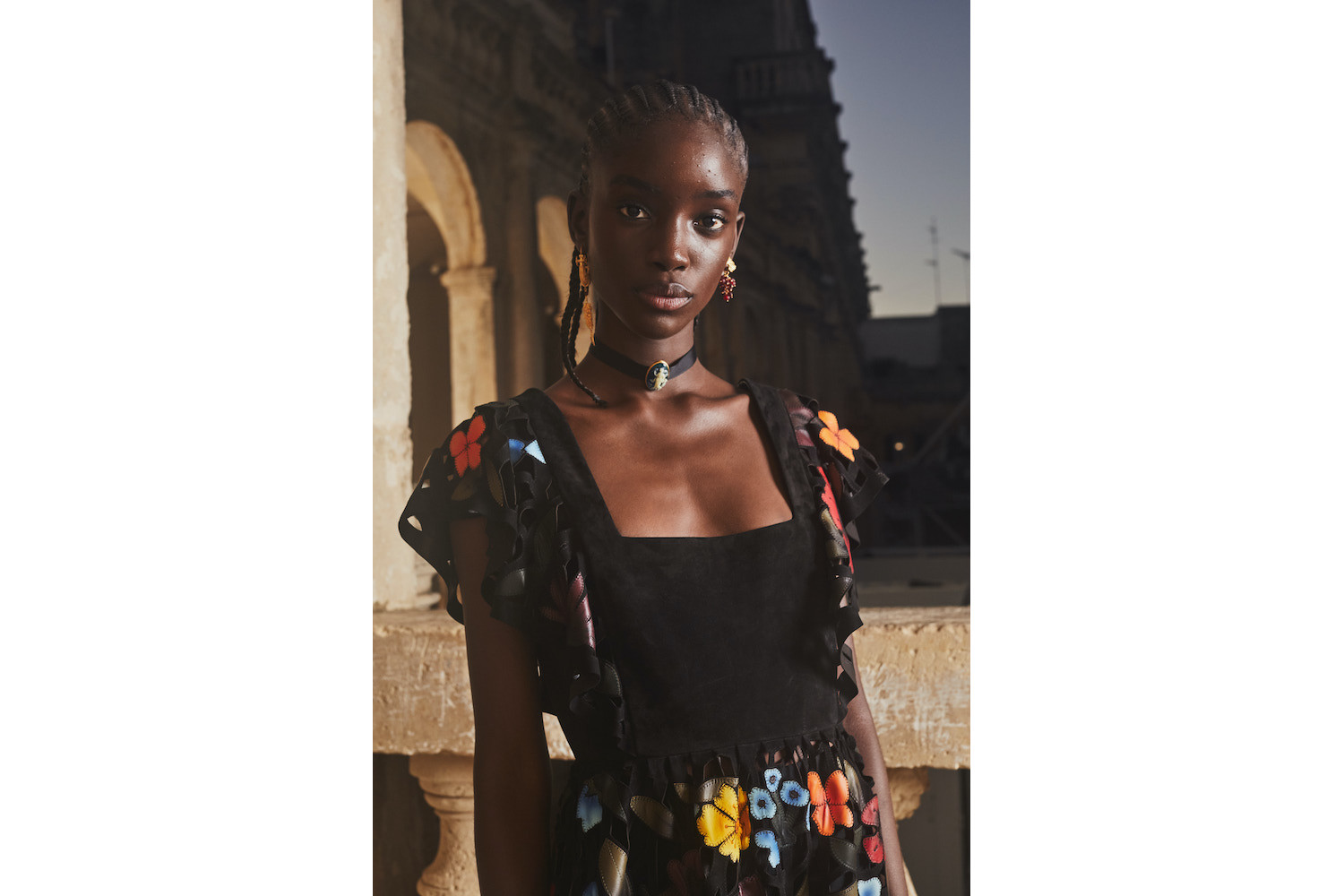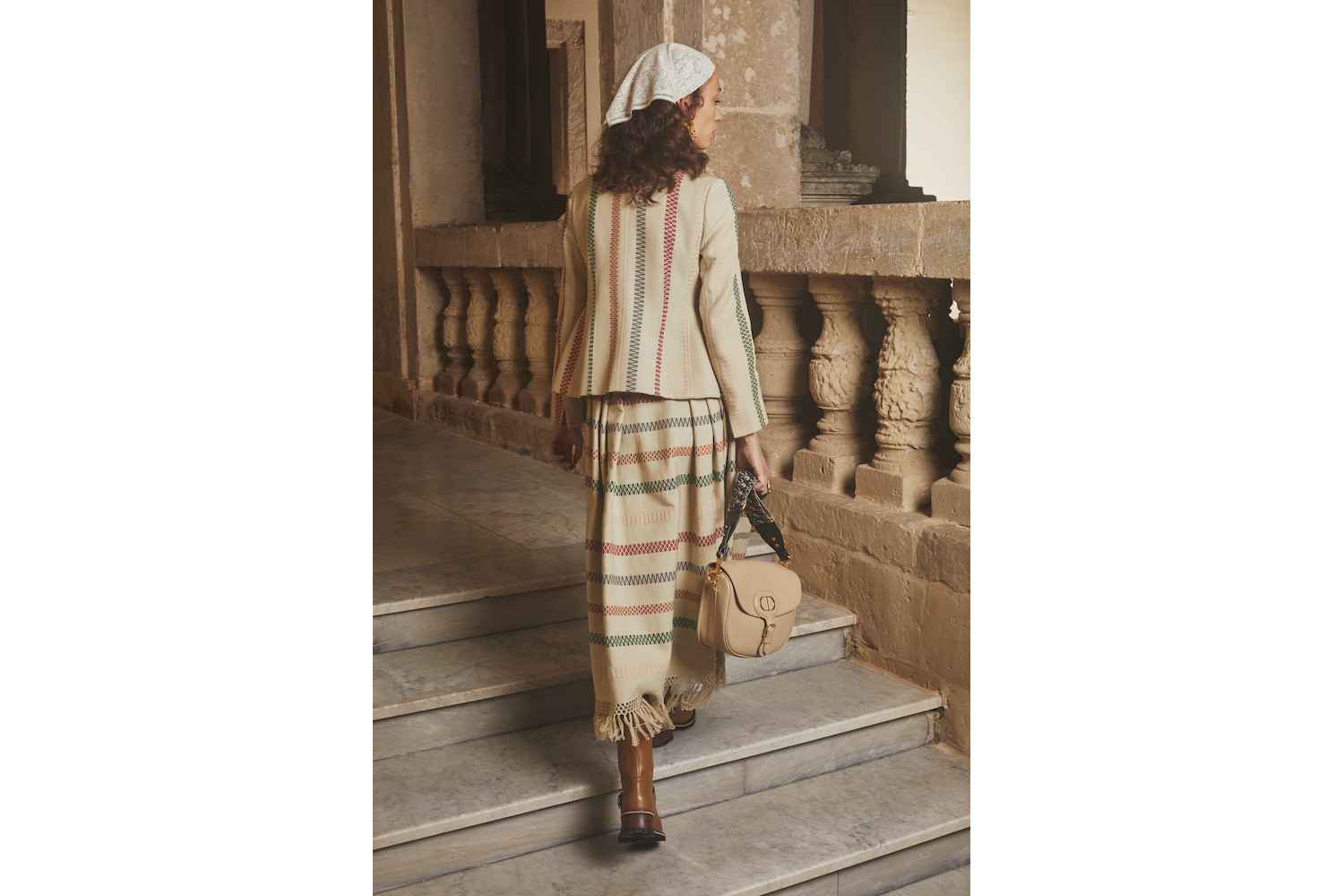Translating a classic or traditional language in a contemporary way, using stylistic elements and characteristics from the past, is a complex endeavor. And that’s not all. It is insidious. As soon as you touch a historical, artistic, or social heritage, defenders and detractors multiply, making it a dangerous business.
Yet it is essential to know history as well as our current language with its digital vocabulary, lest history repeat itself in an asynchronous, ill-timed rhythm. Those who are too attached to archetypes and terrified of the game risk atrophying history itself. An example of this, staged a few days before the Dior show, was the Vogue Hong Kong shoot with Chiara Ferragni at the Uffizi Galleries. This generated controversy, leading me to ask myself, “If she can’t, who can?” Should we not build new codes of conduct and liberate future generations from a notion of elitist culture that shares nothing but an intellectual outrage at having desecrated a temple of knowledge?
During an online press conference in June, Dior’s CEO, Pietro Beccari, together with Maria Grazia Chiuri, reiterated their conviction that luxury can and must give back to the public. Beccari explained, “When it comes to fashion, nothing is more exciting than a real fashion show,” adding that “with this action, we want to send a message of hope and optimism. For some people it is a rebirth after a period of many difficulties.”
Maria Grazia Chiuri’s methods are both complex and sophisticated. Never before has she engaged the territory and its infinite social, cultural, and economic declinations as in this show. She meticulously curated every aspect of the event, from the production of the luminarie to the sourcing of local photographers, the orchestra, the fabrics, and the cocktails. The audience (with more than twenty-two million views on the first day) was overwhelmed by a magically powerful mixture of color and ritual, which every aspect of the show proclaimed to the world.
As per tradition, the luminarie lit up as the orchestra of the Notte della Taranta began playing its first notes at the center of Piazza del Duomo in Lecce. I remember that strong and rigorous female voice, which still makes me shiver, as it bewitched the small audience at the event, absent the usual slew of VIPs and accredited journalists from all over the world. In Lecce there was a reversal — a sublime and supreme coherence, since only insiders, artisans, the fashion house, and a few close friends of Maria Grazia were present at the event. Less is more, and the “more” here is the territory of the Southern Hemisphere. It was a linguistic and visual crescendo, followed by a poetic climax to make your eyes glisten.
Had I ever imagined a “significant” staging of the village festivals in Salento, I would have hoped for them to be just like this: everywhere there were feminist texts in support of the hard work being done and the struggle for equality — themes that always seem to be addressed but never digested, and which are still far from being resolved.
“The difference for women is the millennia of absence from history.” “You can create a revolution without making one.” These are some of the phrases among Marinella Senatore’s luminarie. Shedding light on her social commitment.
When the show started, the models interacted with a group of pizzica dancers, passing amid their feats and movements. The designs included recognizable cuts and the signature touch of Maria Grazia Chiuri, through tulle dresses, embroideries, and very sheer fabrics. Long skirts and cotton suits were adorned with roses embroidered in the tradition of bobbin lace (inspired by a Miss Dior dress from 1949). All fabrics were the work of a foundation of women weavers from Lecce called Le Costantine. The strength of women resides within the clothes. Passion guides every step. Determination strides forward. It is not fashion, but life. It is not clothing, but a design manifesto. It is not who can afford them, but what they express. This is the democratic, unique, subversive way of Maria Grazia Chiuri.
The show goes on. The dancers leave the “stage” after circling around the piazza. It’s dark, and a familiar voice starts singing “Lu rusciu te lu mare,” ending the show with “Meraviglioso.” It is Giuliano Sangiorgi from the musical group Negramaro, bringing tenderness to the atmosphere. He leaves the stage with a vocal manifesto: “Goodnight from the South.” Every south in the world, both physical and intangible. Those to fight for. Those to be staged.

